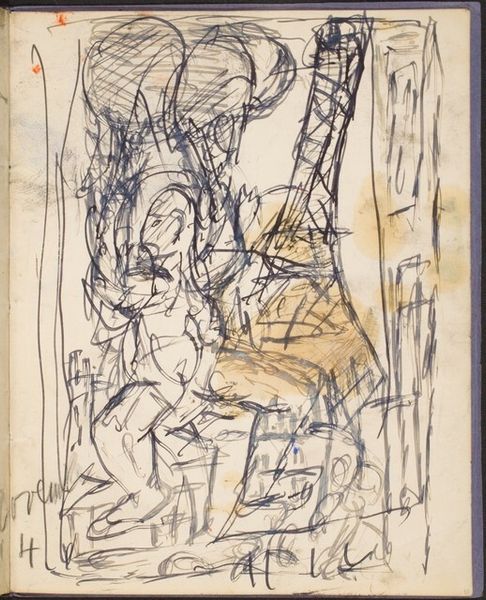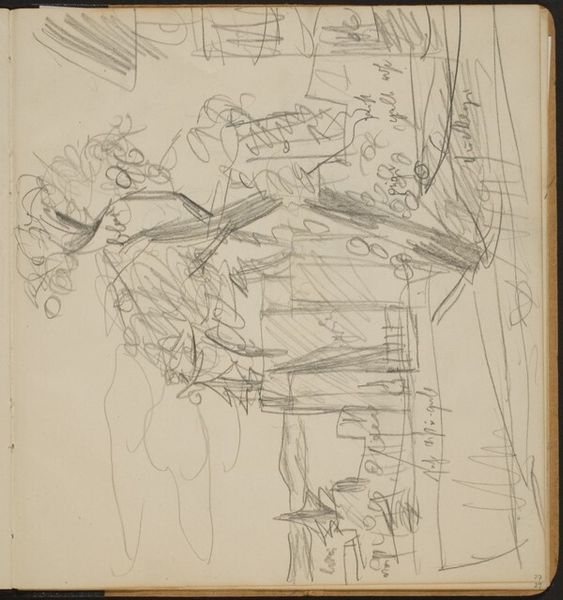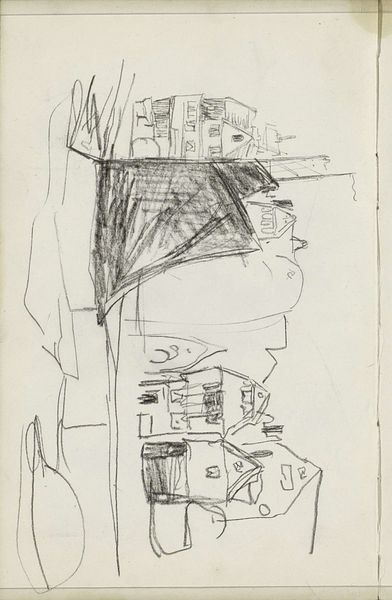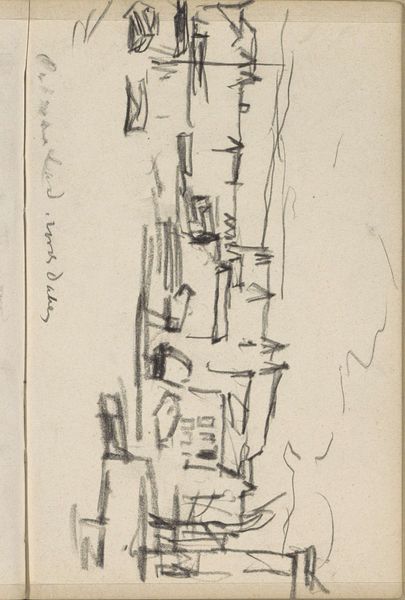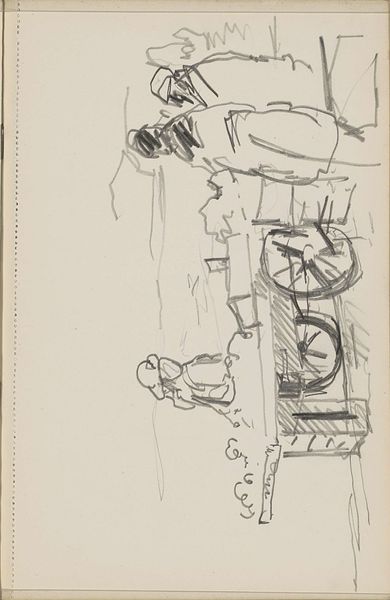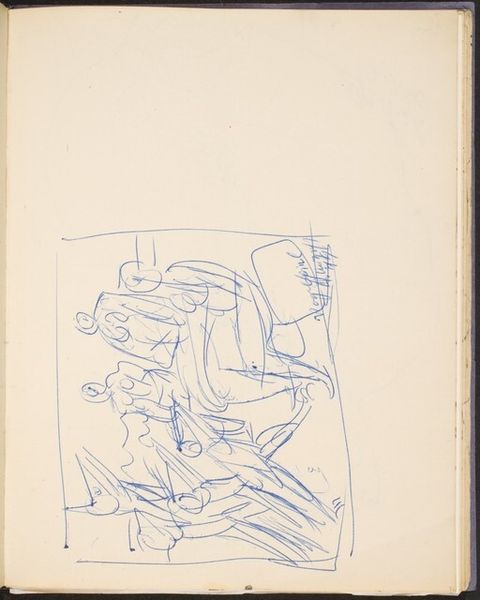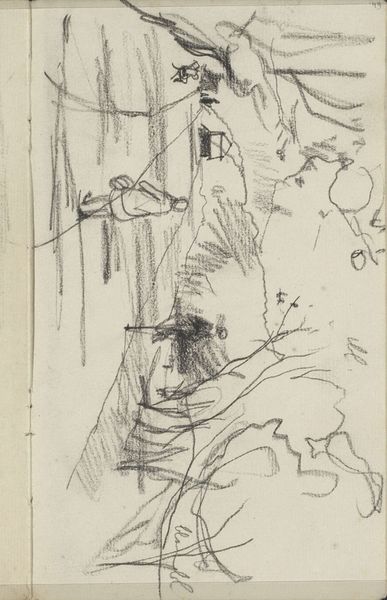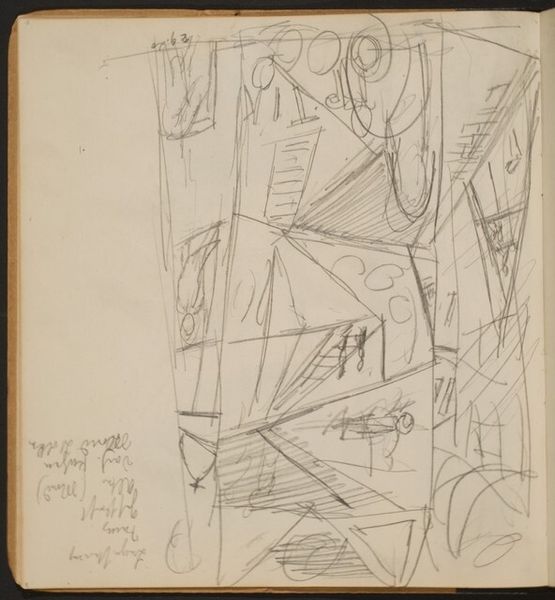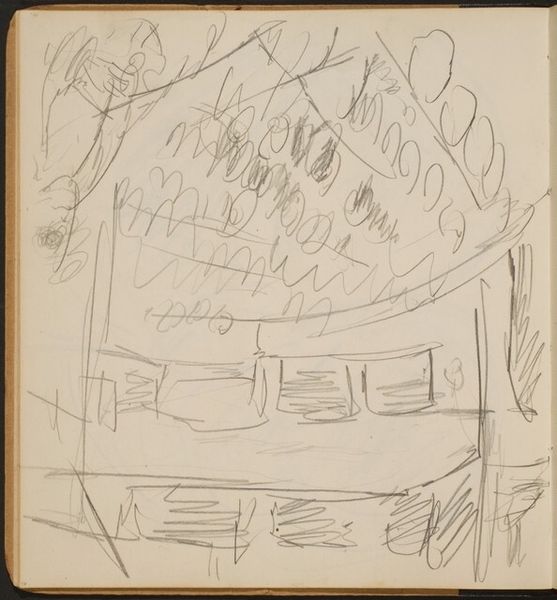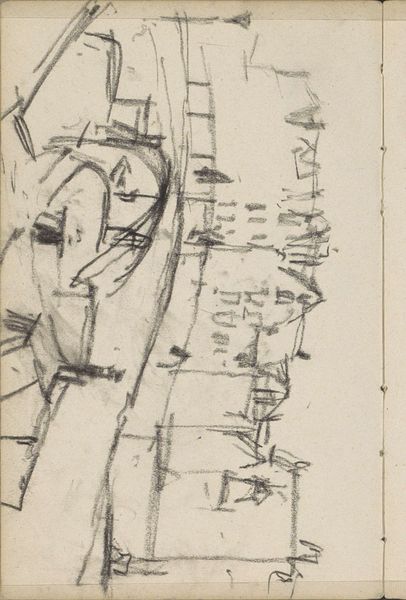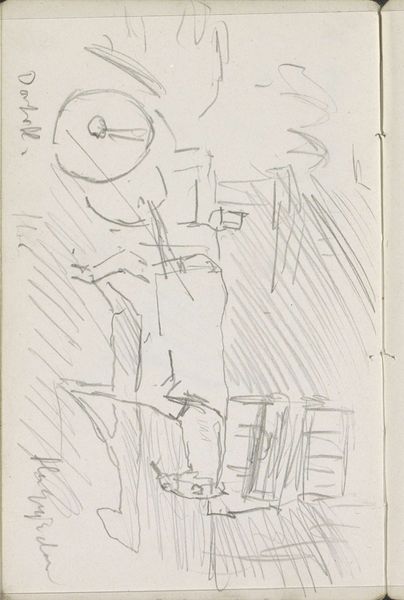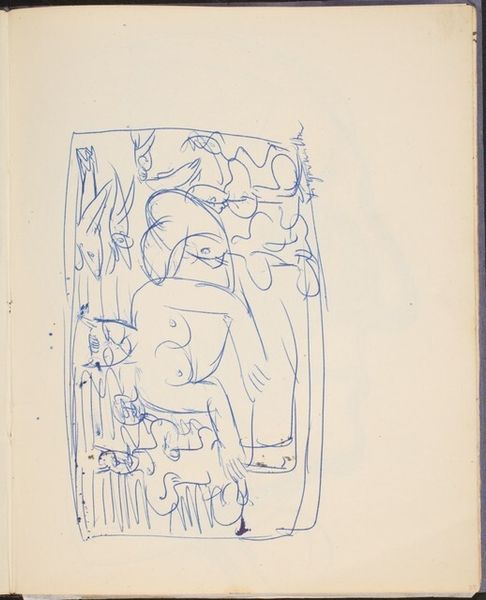![Mann unter Wasser und Stilleben mit Kerzen (Man under Water and Still life with Candles) [p. 45] by Max Beckmann](/_next/image?url=https%3A%2F%2Fd2w8kbdekdi1gv.cloudfront.net%2FeyJidWNrZXQiOiAiYXJ0ZXJhLWltYWdlcy1idWNrZXQiLCAia2V5IjogImFydHdvcmtzL2FmZGJiNTllLTRjN2YtNDFkZi05MDJjLWY5NWIyODI2ODVmNC9hZmRiYjU5ZS00YzdmLTQxZGYtOTAyYy1mOTViMjgyNjg1ZjRfZnVsbC5qcGciLCAiZWRpdHMiOiB7InJlc2l6ZSI6IHsid2lkdGgiOiAxOTIwLCAiaGVpZ2h0IjogMTkyMCwgImZpdCI6ICJpbnNpZGUifX19&w=1080&q=75)
Mann unter Wasser und Stilleben mit Kerzen (Man under Water and Still life with Candles) [p. 45] 1944 - 1949
0:00
0:00
Copyright: National Gallery of Art: CC0 1.0
Editor: This is Max Beckmann's "Mann unter Wasser und Stilleben mit Kerzen (Man under Water and Still life with Candles)," from 1944 to 1949. It's an ink drawing. The composition, divided vertically, makes it seem like we’re seeing two different worlds. I'm struck by the contrast and the rather claustrophobic feeling, even in the "under water" scene. What jumps out to you as you look at it? Curator: The division of the page certainly presents an initial dichotomy. I see not so much separate worlds, but rather two contrasting arrangements of forms which underscore Beckmann's manipulation of spatial relations. Note how the dense hatching in the still life on the right contrasts with the relatively open, linear treatment of the underwater scene on the left. This is significant. Editor: Significant how? Curator: The visual weight created by the densely hatched marks pushes the still life forward, flattening the pictorial space. Conversely, the open lines and suggestion of receding planes in the left panel allow the eye to move deeper into the image, suggesting depth. Beckmann's disruption of conventional perspective creates a visual tension that activates the entire surface of the page. Editor: So it's less about what's being depicted, and more about how it's depicted, the line work and the creation of space. Curator: Precisely. We should be attentive to how line and form establish visual rhythms, activating the viewer's gaze as it navigates the spatial complexities he's laid out. It’s about the structural relationships between these two graphic systems. Editor: I hadn't considered how much the negative space contributes. Thanks for pointing that out. Now, the line work makes more sense as its own subject. Curator: It's these nuances that constitute the essence of formalist inquiry.
Comments
No comments
Be the first to comment and join the conversation on the ultimate creative platform.
